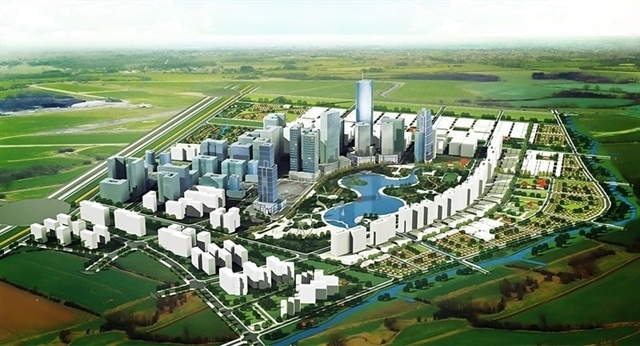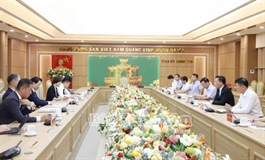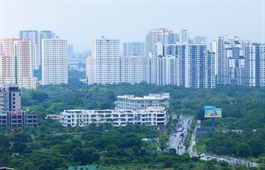The grand restructuring: a leap towards efficiency
The grand restructuring: a leap towards efficiency
Vietnam stands at the threshold of a sweeping transformation, one that promises to reshape its administrative boundaries and, in turn, the trajectory of its urban development and real estate landscape. Son Huynh, co-founder of Civitas, sheds light on what could be a golden window of opportunity.

Son Huynh, co-founder of Civitas |
On July 1, a landmark resolution streamlined the country’s provincial level administrative units from 63 to a more agile 34.
This decisive reform, the most significant administrative overhaul since reunification, marks a strategic shift towards smarter, more effective governance and promises to unlock unprecedented opportunities for urban development and real estate investment, particularly in major economic powerhouses like Hanoi, Ho Chi Minh City, and Danang.
For decades, Vietnam’s 63 provincial level units often led to fragmented planning, bureaucratic redundancy, and varying levels of administrative efficiency.
The new resolution aims to address these challenges head on. By consolidating provinces and abolishing the district level, Vietnam is moving towards a unified two-tier local governance system: provincial level units (provinces and centrally governed cities) will act as the primary authority, directly overseeing commune level governance. This streamlined structure is designed to eliminate overlapping responsibilities, reduce bureaucratic layers, and foster more transparent reporting lines, ultimately leading to more responsive and efficient governance.
The rationale is clear: a more cohesive administrative framework can better capture emerging opportunities in a rapidly evolving global economy. This restructuring is not merely about adjusting boundaries; it is about creating larger, more economically viable zones with enhanced appeal for infrastructure and industrial investment.
The implications of this administrative reform for Vietnam’s real estate market and urban development are profound. The most immediate advantage is the emergence of larger, more competitive economic zones. Merging provinces allows for the combination of complementary strengths.
For instance, land rich but cash poor province can merge with a more financially robust neighbour, enhancing capital efficiency and resource utilisation. This consolidation creates combined economic scales that are far more attractive to large-scale domestic and international investors, who are increasingly selective about their investment destinations.
Mitigating issues
One of the persistent challenges in Vietnam’s urban development has been fragmentation in planning across provincial boundaries.
Administrative restructuring enables unified, large-scale planning across critical sectors such as transport, urban development, and industrial parks (IPs). This reduces fragmentation and facilitates more efficient execution of interprovincial infrastructure projects like roads, bridges, and waste treatment facilities. For real estate, this means more cohesive master plans, better integrated infrastructure, and a clearer long-term vision for development, reducing uncertainty for investors.
Provinces will have the foundation to delineate zones clearly, facilitating the development of specialised IPs or clusters, such as those for supporting industries or specific sectors like automotive and semiconductors. With expanded administrative boundaries, provinces can plan more large-scale IPs and urban areas, offering a wider array of business options.
This increased availability of land will mitigate industrial land shortages in high-demand localities, providing domestic and international enterprises greater access to suitable sites for establishing factories.
For urban development, this translates into larger land banks for modern projects that might be difficult to implement in land constrained inner-city areas. This opens up opportunities for diverse real estate segments, from industrial and logistics to residential and commercial.
In addition, the restructuring is expected to drive significant demand for upgraded transport, utilities, logistics, and digital infrastructure in newly merged areas.
This infrastructure push directly underpins real estate development, making previously remote areas more accessible and viable for investment.
The effects of this reform will be particularly pronounced in Vietnam’s major economic hubs, which are already experiencing rapid urbanisation and outward expansion.
Ho Chi Minh City’s adjusted master plan to 2040, with a vision to 2060, already envisions its transformation into a “global, civilised, modern, and compassionate” city, serving as an economic, financial, and service hub for Asia. The provincial mergers directly support Ho Chi Minh City’s ambition to integrate with neighbouring provinces like Binh Duong and Ba Ria-Vung Tau, forming a unified mega-region.
Among these, the Ring Road 4 as a catalyst. The recently approved Ring Road 4, a 207km regional beltway with a massive investment, is a prime example of infrastructure enabling this integration. This expressway connects major manufacturing hubs with critical logistics gateways. This direct linkage will supercharge industrial, manufacturing, and logistical capacities, drastically cut operational costs and attracting new investment flows.
Ring Road 4 is crucial for Ho Chi Minh City’s multi-centred urban model, which divides the city into six distinct urban sub zones. These sub zones, each with specialised functions, will be seamlessly connected by the new road, fostering self-sufficient “living basins” and alleviating central core congestion.
A real presence
Expanding the capital region Hanoi, as the nation’s capital, is also undergoing significant urban expansion, with its own Ring Road 4 project commencing in 2023, connecting it to neighbouring provinces like Bac Giang, Hung Yen, and Bac Ninh. The provincial mergers will further accelerate urbanisation in the Capital Region, which includes nine surrounding provinces.
The mergers will accelerate the development of satellite cities around Hanoi, which have already emerged as vibrant investment destinations due to improved infrastructure and abundant land reserves. Former provinces like Vinh Phuc, Hung Yen, and Ha Nam can provide large land banks for modern urban projects that are difficult to implement in land constrained inner-city Hanoi.
In transportation, key projects like Ring Road 3, Ring Road 4, and interprovincial expressways will more effectively connect the core region with peripheral areas, making it increasingly convenient to live in neighbouring provinces while working in Hanoi.
In real estate dynamics, property prices in the capital region’s provinces are currently significantly lower than in Hanoi, creating a dual opportunity for both investors and homebuyers.
While Danang itself is a centrally governed city and may not undergo direct mergers, the principle of provincial consolidation applies to its surrounding regions, creating larger, more viable economic entities that will enhance its regional role. For instance, the merger of Khanh Hoa and Ninh Thuan provinces to establish the new Khanh Hoa province, and Gia Lai with Binh Dinh, offers significant opportunities.
The new Khanh Hoa, bordering Dak Lak, Lam Dong, and the East Sea, is poised for a boost in tourism and resort real estate, particularly in land and apartment segments. Similarly, the new Gia Lai, endowed with both mountains and coastline, shows greater potential for resort, industrial, logistics, and large scale urban real estate development, leveraging the combined value of sea, forest, and highlands.
While the advantages are compelling, the implementation of such a sweeping reform is not without its complexities. Short-term business discomfort may arise due to changing points of contact and potential misalignment in merged localities. Investors may face temporary delays in administrative processes, and the need to harmonise local regulations, tax incentives, and land use policies across newly merged provinces will be a significant undertaking. There is also a risk of contractual and land use uncertainty as existing agreements come under review.
However, these challenges also present a major opportunity to rebuild a more transparent and efficient regulatory framework. The government’s top priority will be transparent communication and ensuring that administrative restructuring serves as a transformative springboard towards a more consistent, fair, and efficient investment environment.
Vietnam’s decision to streamline its provincial structure is a bold declaration of its commitment to modernising governance for the digital age and enhancing competitiveness. By creating larger, more integrated economic zones, facilitating unified planning, and accelerating infrastructure investment, this reform is set to unlock unprecedented opportunities across the real estate market and urban development landscape.
- 12:30 23/07/2025




























